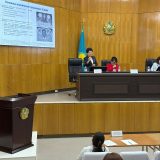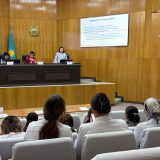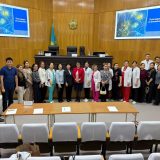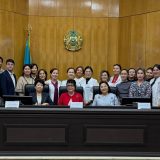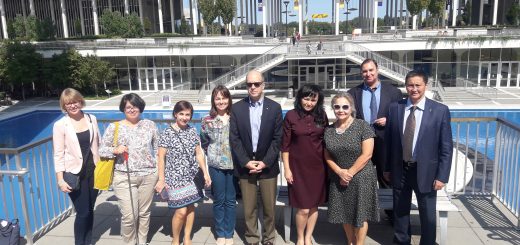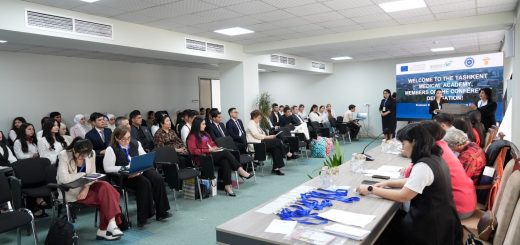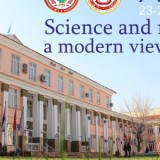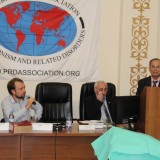Neuromyelitis Optica Spectrum Disorders and Myasthenia Gravis: Current Understanding of the Problem and Clinical Approaches
The Department of Nervous Diseases of Asfendiyarov Kazakh National Medical University continues its series of educational events for practical healthcare, dedicated to the 95th anniversary of our university.
On November 13, in the city of Kyzylorda, an educational seminar was held as part of the implementation of the cascade training method for practical healthcare specialists, in accordance with the Roadmap for Improving Medical Neurological Care for the Adult Population of the Ministry of Health of the Republic of Kazakhstan for 2025–2027 (No. 03324 dated January 23, 2025). The event was organized with the support of the “Association of Neurologists” of Kazakhstan, the Institute of Postgraduate Education of Asfendiyarov KazNMU, and the Kyzylorda Regional Health Department. The coordinator of the event was the chief freelance neurologist of the Kyzylorda Regional Health Department, S.B. Berzhapparova.
In the assembly hall of the Multidisciplinary Regional Hospital, a training seminar was held for physicians, focusing on current issues of diagnostics, treatment, and dynamic follow-up of Myasthenia Gravis and Neuromyelitis Optica Spectrum Disorders (NMOSD). Neurologists and anesthesiologist-resuscitators from various medical institutions of Kyzylorda city and the region took part in the event.
The invited speakers included professors of the Department of Nervous Diseases of Asfendiyarov Kazakh National Medical University: G.A. Mukhambetova, R.B. Nurzhanova, and the head of the department, S.T. Turuspekova. During the seminar, participants discussed:
- the modern classification of NMOSD, including Myasthenia Gravis, congenital myasthenic syndromes, and Lambert–Eaton syndrome;
• clinical and instrumental diagnostic criteria with emphasis on EMG, antibody testing, rapid fatigue tests, and imaging techniques;
• new therapeutic possibilities, including targeted immunomodulatory agents, plasmapheresis, intravenous immunoglobulins, and modern immunosuppression regimens;
• management of patients with treatment-resistant Myasthenia Gravis, strategies for managing exacerbations, and features of a multidisciplinary approach.
Special attention was given to differential diagnostics, clinical case analysis, and discussing complex situations encountered in daily medical practice. In an interactive format, participants reviewed decision-making algorithms, which allowed them to deepen their understanding of pathophysiology and optimize patient management approaches.
The seminar emphasized the importance of early detection of neuromuscular transmission disorders and NMOSD, and highlighted that timely diagnosis and personalized therapy significantly improve patients’ quality of life.
Faculty members of the Department of Nervous Diseases provided consultative and diagnostic assistance to colleagues by participating in a clinical council on a critically ill patient in the ICU.
The organizers expressed their gratitude to all participants for active discussion and high professional interest.




